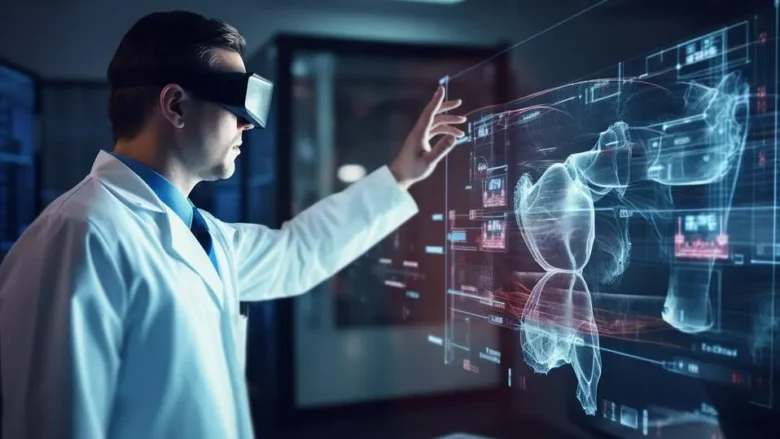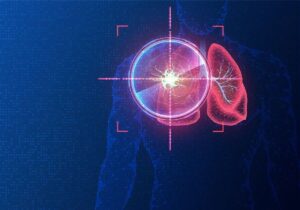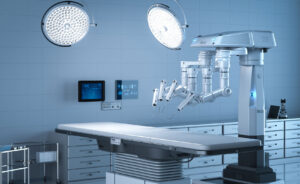By 2025, healthcare will undergo unprecedented change. Rapid advancements in artificial intelligence, biotechnology, and digital health are enabling medical science to surpass previously unthinkable boundaries. This period is particularly crucial because these technologies are converging to make healthcare smarter, faster, and more personalized. We can now manage and even cure diseases long considered incurable, and patient care is becoming increasingly predictive and preventative. These medical technologies are more than just concepts; they are now being used in hospitals, clinics, and at home, changing the lives of millions of people worldwide.
AI in Imaging and Diagnostics
AI will lead the healthcare revolution in 2025. AI systems can now review medical images such as MRIs, CT scans, and X-rays with speed and accuracy comparable to or even better than that of human professionals. Within seconds, these technologies can detect early indicators of diseases, like cancer, stroke, or heart disease, that humans might miss. AI is being used to help doctors make faster and more accurate diagnoses by looking beyond images. It can also analyze laboratory test results, medical histories, and even voice recordings. AI is a powerful tool for early diagnosis because it can process vast amounts of medical data in real time. Such analysis can improve treatment outcomes and reduce treatment costs.
Gene Editing and CRISPR for Treating Diseases
By 2025, CRISPR gene-editing technology will move from the laboratory to medical practice. Scientists can now use this groundbreaking method to modify DNA in living cells and repair genetic defects that cause diseases. CRISPR offers hope for a permanent cure for patients with sickle cell anemia, cystic fibrosis, and other inherited malignancies. Recent studies have demonstrated the safe application of gene editing to human cells with minimal side effects. Researchers are currently studying how CRISPR can be used to target disease-causing genes and combat complex diseases such as Alzheimer’s, diabetes, and heart disease. This form of precision medicine is changing the way we think about treating symptoms and finding the underlying causes.
Remote Wearables and Health Monitors
Wearable technology has long made outstanding strides beyond just fitness tracking. By 2025, smart wearable devices will be able to measure blood pressure, blood sugar levels, heart rate, sleep patterns, and even bodily fluids in real time. These devices will provide data directly to healthcare providers, allowing them to monitor patients remotely and intervene earlier without the patient having to go to the hospital. This information is crucial for people with chronic conditions like diabetes or heart disease. Wearable technology also makes it easier for people in rural and underdeveloped areas to access telemedicine. This combination of virtual care and continuous monitoring reduces hospital readmissions, improves treatment outcomes, and gives patients more control over their health.
3D Printing of Organs and Tissues
One of the most important emerging technologies for 2025 is 3D bioprinting. Scientists can now print functional human tissue, including skin, arteries, and even original organs, using bio-inks made from living cells. While fully transplantable organs are still being developed, the progress in this field is astonishing. For example, 3D-printed skin grafts have played a key role in the successful healing of serious injuries in burn units. Surgeons also use bioprinted tissue to practice and prepare for difficult surgeries, making them safer. This technology could help address the global shortage of organ donors and reduce the risk of organ rejection, as it can create organs from a patient’s own cells.
Genetic Profiling for Personalized Medicine
The days of everyone receiving the same treatment are over. Genetic analysis is enabling personalized medicine, allowing doctors to tailor treatments based on a patient’s DNA. By understanding a patient’s genetic risk for a particular disease and how well their body digests and absorbs medications, doctors can develop treatments that work best with the fewest side effects. For cancer patients, this means treatments that target mutations unique to their tumor. Doctors can now prescribe drugs for anxiety and depression because they have a better understanding of the chemistry of a patient’s brain. This approach not only delivers better outcomes but also reduces trial and error in treatment, saving time and money.
Robotics and Autonomous Medical Devices
Robotics is making surgery safer and more precise than ever. By 2025, some hospitals will be using robot-assisted surgery, particularly for brain, heart, and spine surgeries. Experienced surgeons operate these surgical robots, guided by real-time imaging. This means they can create smaller wounds, reduce blood loss, and heal faster. Some devices are even semi-autonomous, meaning they can perform certain tasks independently, without human intervention. Robots are used for tasks such as administering medications, cleaning rooms, and guiding patients in and out of operating rooms. This automation can help alleviate staff shortages and keep healthcare facilities running more smoothly.
Drug Discovery with AI
Historically, drug discovery has been time-consuming and expensive. By 2025, AI will change that and make it easier. AI systems are now capable of analyzing millions of compounds, predicting their effectiveness against specific diseases, and conducting clinical trials prior to human testing. This process accelerates the development of vaccines, antibiotics, and antivirals. For example, AI has played a significant role in the development of new drugs against antibiotic-resistant viruses and bacteria. This ability to quickly identify potential therapeutic candidates is crucial for addressing global health problems and could rapidly change how we respond to future epidemics.
Conclusion
Healthcare technology in 2025 isn’t just a futuristic idea; it’s a practical tool that will improve the lives of people around the world. The medical field is undergoing a massive shift, from AI-driven diagnostics and CRISPR-based gene therapies to 3D-printed organs and personalized treatment plans. These new ideas are making healthcare more precise, practical, and accessible than ever . Equally fascinating is the potential of new technologies to treat diseases and prevent them in the first place. This shifts the focus of medicine from reactive to proactive. Patients will have more autonomy, treatment will be more personalized, and results will be better in the future. In the future, science, technology, and caring for others will work together to create health and hope.
FAQs
1. Which medical technology will have the greatest impact in 2025?
Artificial intelligence is currently the most important technology for early disease diagnosis because it is fast and accurate.
2. Is it safe to use CRISPR technology?
As of 2025, CRISPR will be safe for many applications, and its effectiveness has been proven in multiple clinical studies with minimal side effects.
3. Is it possible that 3D bioprinting technology can replace organ donation?
Not yet, but the technology is developing rapidly. It will soon be possible to create tissues and organs that work with a patient’s own cells, eliminating their reliance on donated organs.
4. How can wearable health devices help manage chronic diseases?
They provide doctors and patients with real-time information, allowing them to detect problems early and adjust treatment before the condition worsens.
5. Will personalized medicines be expensive?
Customized medicines may be more expensive initially, but as the technology becomes more widespread, prices should decrease and, in the long run, save money by providing better care.




